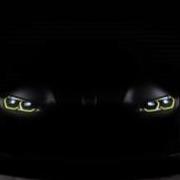About #LiNeX
- Birthday 10/01/2000
Title
-
Owner #ThunderZM
Informations
-
Steam
que366
-
Gender
Male
-
Interests
Enjoy life.
-
City
Dubai
Recent Profile Visitors
10,768 profile views
#LiNeX's Achievements
-
fadyyousef275 started following #LiNeX
-
bro im fustrated that time thats why i write some abusing things pls forgive me and accept my request and i know all rules
-
Dubai: Going to the Moon in 2024 will pave the way to accomplish the UAE’s mission of sending humans to Mars by 2117. This — in a nutshell — is the objective of the first Arab mission to explore the Moon, Adnan AlRais, Mars 2117 Programme Director, said during Sunday’s Press briefing on the Emirates Lunar Mission. Adnan AlRais: The Emirates Lunar Mission is part of the new 2021-2031 strategy launched by the Mohammed bin Rashid Space Centre (MBRSC). His Highness Sheikh Mohammed bin Rashid Al Maktoum, Vice-President and Prime Minister of the UAE and Ruler of Dubai, had announced on September 29 that the UAE would launch an Emirati-made rover that would land on the surface of the moon by 2024. The rover was named “Rashid”, after the late Sheikh Rashid bin Saeed Al Maktoum, the builder of modern Dubai and one of the UAE’s Founding Fathers. The rover is set to land in an area on the Moon’s surface that has not been explored by previous lunar exploration missions. If successful, the UAE will become the first Arab and only the fourth country in the world to land on the Moon, after the United States, the former Soviet Union and China. Lunar gateway to Mars AlRais noted that in order for the UAE to realise its strategic programme of having a human colony in Mars, the country has to build its capacity in space missions. He said: “The Emirates Lunar Mission paves the way for the realisation of the Mars 2117 Programme’s strategy. The mission will provide us with answers and data that define the course of our mission to explore Mars and benefit humanity.” He further explained: “For a road map to accomplish future human missions, we need to first go to the moon to develop a lunar gateway and develop robotics missions to enhance technologies and create new discoveries that will help us in the future to achieve our ultimate goal, which is basically sending humans to Mars and building a settlement there.” AlRais had earlier said Emirates Lunar Mission “is not an easy one, but every risk is a learning opportunity”. “Developing local knowledge through practical projects is very important for us, because we are able to transform challenges to opportunities as our leaders have taught us.” He added: “Rashid, the lunar rover, will conduct numerous scientific tests on the surface of the Moon that will contribute to making qualitative developments in the fields of science, communication technologies and robotics — not just for the UAE, but also for the worldwide scientific community. The lunar mission will also create a conducive environment for space entrepreneurs and inspire the UAE and Arab youth to take up space sciences and contribute towards making the UAE a hub for space technology. Timetable and specs Dr Hamad Al Marzooqi : Dr Hamad Al Marzooqi, project manager of Emirates Lunar Mission at MBRSC, said a team of Emirati engineers, researchers and experts at MBRSC is working towards completing the design of the Lunar Rover by 2021. Manufacturing and assembly will be completed in 2022, while preliminary experiments and tests of the prototype will commence in 2023. Rashid will be equipped with advanced technologies, including a 3D camera, advanced motion system, sensors, a microscope camera and a thermal imaging camera plus state-of-the-art communication system. Once on the surface the moon, it will run on solar panels. Its four cameras will move vertically and horizontally. It will also be equipped with sensors and systems to analyse the properties of soil, dust, radioactivity, electrical activities, and rocks on the surface of the Moon. ‘A very interesting site’ According to Al Marzooqi, the rover will land on an unexplored but safe area of the Moon’s surface. “It will be a very interesting site from the scientific point of view,” he added. When asked by Gulf News which countries or space agencies the UAE will be collaborating with, AlRais said they will be making an announcement soon. He said the UAE will work with various space agencies like it did when it had launched its satellite and sent the first Emirati astronaut to space. The MBRSC also has yet to identify which rocket service provider will be tapped to carry the lunar rover to the Moon. Financial details for the project will be announced later.
-
#LiNeX changed their profile photo
-
Dubai: Wearing face mask and holding a thermal gun in his hand, Egyptian expatriate Ibrahim Shehata, 35, a security guard at a po[CENSORED]r park in Dubai, stood at the entrance, welcoming everyone — with a temperature check. It was a Friday evening and a lot people took advantage of the fine weather to take a stroll and stretch their legs in the park. Ibrahim, on the other hand, remained unperturbed by the influx of visitors and asked them to line up as he checked their temperatures one by one. “I’m proud of my job,” Ibrahim told Gulf News. “As a security guard, I help the community stay safe from coronavirus (COVID-19). After the government eased movement restrictions and opened parks as well as businesses and shopping centres, people felt more confident to return to their normal lives. But we are not yet coronavirus free and, as a security guard, I know I have a duty to keep people safe from being infected,” Ibrahim said with conviction. brahim said security personnel have been educated about the common symptoms of COVID-19 and they’ve been trained on what to do in case they encounter suspected cases. Careful reminders “We also remind people to adhere to COVID-19 precautionary measures such as maintaining physical distancing when in public places, wearing face masks and washing hands regularly. As much as possible, we tell them not to gather in big groups,” he added. Sometimes, however, there are some “hard-headed” people who prefer to defy the rules, don’t wear the masks properly and try to argue when their temperatures are taken. “In such cases, it’s important for us (security guards) to stand our ground and be assertive,” Ibrahim clarified. “If there are language problems and people would ask about the rules, we just point them to the posters printed in Arabic, Hindi, Urdu, English, Filipino and Chinese, detailing all COVID-19 precautionary measures,” he explained. “But so far, I have never encountered any violent reaction from anyone,” he added. Extra pair of eyes Most malls, shopping centres and hypermarkets in Dubai, meanwhile, have installed thermal scanners at their entrances to minimise physical contact and streamline the flow of shoppers. But there are still security staff members who check the computer screen and monitor minutely as people enter the premises. Ganesh, an Indian national who works at one of the hypermarket chains in Dubai, was given this task to keep an eye on the thermal camera images flashed on the screen. He said: “With thermal cameras, individuals with high temperatures, one of the symptoms of COVID-19, are identified quickly. The thermal cameras also minimise physical contact and prevent crowding of people at the entrance.” Ganesh also explained how a thermal camera works. First, it scans a person’s face. Then, with the help of a computer software, it locates the hottest point on the face and captures the person’s exact body temperature at that, which is then displayed along with a picture of the person on the monitor. In addition to measuring temperatures, the scanners also detect if people are wearing their face masks properly. “If someone is not wearing his or her mask properly, we draw their attention and tell them to fix the mask before we let them in,” Ganesh said. Acting responsibly Ganesh noted that although there were extra eyes (pertaining to thermal cameras), human observation was still the best way to avert violations of safety guidelines. “We make immediate intervention and we are on hand to keep on reminding people to act responsibly,” he underlined. He added: “Health experts and authorities are still looking for a cure for and prevention from coronavirus. It is therefore very important for people to remain on the guard and strictly follow the safety measures.”
-
For more than 15 years, Lionel Messi has been Barcelona's main man, scoring and assisting hundreds of goals and winning countless trophies. But how has his game changed over time as he has aged and his supporting cast has changed? Gab Marcotti digs into the data. (For his look at Cristiano Ronaldo's career, click here.) Note: Statistics and data measured per 90 minutes via Opta and StatsBomb and based upon games played by Messi prior to the coronavirus-enforced shutdown of European football in March. Jump to: Barcelona breakthrough | Replacing Ronaldinho | Hub of the wheel | Birth of the 'MSN' | Post-Neymar Breaking through at Barcelona (2003-08) Lionel Messi stood out among his peers from a young age. While youth coaches love to talk about developing and nurturing talent, the reality is Messi had such an evident and well-defined skill set -- far above teammates and opponents -- that ensuring he had the ball as much as possible was his quickest path to success. He could dribble, he was fast, he had great timing when running from deep and he could score goals. And because he could do all of that in tight spaces, the easiest thing was to put him in the middle of the action. He played at the top of the diamond in the 3-4-3 formation that most of Barcelona's youth teams used, with freedom and licence to turn into a second striker. At 17, he began playing regularly for Barcelona B -- sometimes in attacking midfield, sometimes wide on the left -- while accumulating a few minutes for the first team. The following season, 2005-06, he had turned 18 and became a regular in coach Frank Rijkaard's senior setup. The Dutchman used a 4-3-3 system, so Messi's "in the hole" role did not exist. Too slight and inexperienced to play up front on his own, the only possible destination for him was out wide. And because there was, understandably, a hierarchy -- Barcelona had won the Spanish title the previous season -- he split time on the right wing with Ludovic Giuly. It is pretty standard, even for the most talented ones, that young players are eased into a first team playing a role that builds confidence. Many No. 10s and center-forwards start out wide as traditional wingers, with the idea to give them space, minimise responsibility and make it as straightforward as possible. If they are right-footed, for example, they play on the right flank and are tasked with running at full-backs, beating them and putting in crosses. - Stream ESPN FC Daily on ESPN+ (U.S. only) - Marcotti: Cristiano Ronaldo's evolution as a player For the left-footed Messi, the natural thing was to play on the left, except occupying that position for Barcelona was a guy named Ronaldinho, who happened to be the Ballon d'Or holder and arguably the best player in the world. He had licence to roam and often ended up inside, where he would join up with Deco, a gifted passer, who was part of Rijkaard's midfield three and tended to break forward in attack. Messi's early numbers reflect this. He dribbled a lot (9.77 attempts in 2005-06, followed by 9.79 and 11.77 in 2006-07 and 2007-08, respectively) and did so successfully (7.40, 7.08 and a whopping 8.64), which is not surprising, as he often received the ball wide on the right in one-on-one situations, with opponents keying in on the Ronaldinho threat on the opposite flank. We did not see much of Messi in the penalty area as compared to later years (he averaged 6.26, 5.39 and 5.54 touches in the box), and he did not shoot much either (3.60, 2.72, 2.79). When he did have an effort from distance, he was not particularly effective, scoring just once in 62 attempts from more than 21 yards over the 2005-06, 2006-07 and 2007-08 seasons. He was diligent in doing defensive work off the ball over the same period; indeed, his possession-adjusted tackles+interceptions were above 3.0 for the only time in his career. In addition, his development was likely hampered by two things. A string of muscular injuries limited him to 23 league starts in both 2006-07 and 2007-08, just as the club was giving him more responsibility. Moreover, he had yet to turn 21, and as Guillem Balague points out in his biography of the Argentine, Messi continued to largely subsist on the diet of a teenager: soft drinks, pizza and plenty of red meat. But that would change ... Taking over from Ronaldinho (2008-10) The summer of 2008 saw a symbolic passing of the torch at Barcelona. Pep Guardiola replaced Rijkaard as first-team coach, while Deco and Ronaldinho were sold, as it became clear to the new manager that not only was Messi the club's future, but the future was now. Messi was given the No. 10 shirt and made the team's highest-paid player, but it was critical that he stayed fit after eight muscular injuries over the previous two seasons. His diet had to change, so he was assigned a nutritionist and, probably not by coincidence, grew in strength and durability. Guardiola shaped the team in a way that undeniably suited Messi, who began to enjoy some of the creative freedoms moving inside that would become his hallmark. Thierry Henry, who had arrived a year earlier, flourished in a wide position with similar licence, but he was different in that he looked to run behind defences. More generally, Guardiola's early style -- heavy on possession and short passing -- suited Messi. He was comfortable in congested areas and surrounded by pure footballers, from Xavi and Andres Iniesta in midfield to the newly arrived Dani Alves at right-back. Messi had a phenomenal season in 2008-09, as Barcelona won the La Liga-Copa del Rey-Champions League Treble. He created plenty (his expected goals -- xG -- assists from open play were up to 0.35), while he also dribbled effectively (9.27 attempted, 6.27 completed) and took more shots (3.65). Tellingly -- and this would be a staple for him during the Guardiola era -- Messi was taking mostly good shots with an xG/shot mark of 0.15. His fitness was improved and decision-making was better, while Guardiola's style, which favoured taking an extra pass if it meant getting a better shot, also helped. The 2009-10 campaign proved to be a bit of an outlier due to the arrival of Zlatan Ibrahimovic. Guardiola was the talk of football, with a team of seven homegrown La Masia academy alumni and an approach predicated on movement and possession, but center-forward Samuel Eto'o, who had worked tirelessly for the more glamorous players behind him (first Ronaldinho and now Messi), was involved in a contractual dispute. There also was a sense that, despite their success, this Barcelona team was small, lightweight and one-dimensional. If you could add a player blessed not only with strength and size and power, but also a delicate touch on the ball, then surely the team would be even greater than the sum of its parts. And so Ibrahimovic moved to the Camp Nou from Inter in a cash-plus-player deal that saw Eto'o shipped to Italy. Ibrahimovic did not fit Barcelona's style, though, and clashed with Guardiola. And while there was no personal issue between the two players, the impact on Messi's game was evident: His touches in the box fell from 8.79 to 7.92, and his shots from distance went way up, from 36 to 63. That total was the highest of his career until 2016-17, when he was almost 30 and again playing with a genuine center-forward (Luis Suarez). Simply put, while Eto'o worked to make space for others, Ibrahimovic was less mobile and, perhaps, more determined to be the offensive terminus. Ibrahimovic clogged the middle, and that meant Messi had to operate farther away from goal. Barcelona won La Liga with a record points total of 99 but fell short in the Champions League. Messi's season was productive, with 33 league goals from open play, but it was the sort of performance that quickly convinced Guardiola he could be even more productive without Ibrahimovic, who was sent to Milan. Henry, whose minutes and production had declined, as well, was dispatched to Major League Soccer. In came David Villa, also a center-forward but more mobile and versatile. Meanwhile, Pedro, who had come up from the B team and begun to replace Henry the season before, was anointed a starter. Finally, Messi had a front three that was made-to-measure for his skills. The hub of the wheel (2010-14) With Pedro and Villa as natural foils and Guardiola's short-passing game in full swing, Messi enjoyed some of his best individual seasons. At once a creator and finisher, he was still nominally starting on the right wing, but in such a fluid front three, Messi appeared all over the front line, which meant he spent plenty of time in the middle. Barcelona won La Liga and the Champions League in 2010-11. And while his non-penalty league goals were down to 27, Messi was still untouchable when it came to dribbling (10.75 attempted, 7.47 successful) and delivered a stellar 0.34 xG assisted from open play. The following year would be Guardiola's last at Barcelona and saw him experiment with more exotic formations, including playing three at the back and tinkering with midfield. Cesc Fabregas, Barcelona born and bred, returned to the club after a long spell at Arsenal to freshen up the Xavi-Iniesta partnership but made little impact. Alexis Sanchez, who also arrived in the summer, failed to live up to the hype, as well, and Villa missed six months of 2011-12 through injury. The turbulence meant Barcelona would end the season empty-handed in terms of trophies, but that did not stop Messi from taking on more responsibility. He finished with 73 goals in all competitions -- an absurd number by any measure -- but it was his 40 non-penalty goals in the league that really stood out, plus the fact that they came with an xG/shot of 0.17, ludicrously high for someone taking a whopping 187 shots. Guardiola's longtime assistant Tito Vilanova took over but was diagnosed with cancer in December 2012 and spent much of the rest of the campaign undergoing treatment. Villa returned, but he was still beset by injury and not the same, while Sanchez continued to struggle. By this stage, Messi was pretty much Barca's entire offense, and he was red-hot. He won his third straight Ballon d'Or and notched 42 non-penalty league goals, seven of which came off 58 shots from beyond 21 yards. His touches in the box did dip slightly, to 8.8, which was perhaps a sign he had become primarily a finisher. His average position left little doubt: Messi was effectively playing center-forward. It was evident that Barcelona revolved around Messi at this stage and he was carrying the attacking burden on his own. In the summer of 2013, the club got him help in the form of Neymar, while Gerardo "Tata" Martino replaced Vilanova, who sadly died in April 2014. Martino came from Messi's hometown of Rosario and was seen as the right man to connect with Messi on a personal level, as well as a sporting level. Despite all that, the heavy dependence on Messi continued. Neymar, just 21, took time to adapt and was limited to 19 league starts. Off the pitch, team president Sandro Rosell was forced to resign following allegations of impropriety relating to Neymar's transfer, and Barcelona were found guilty of breaching rules relating to the signing of foreign youngsters, which led to a transfer ban. Messi carried them as far as he could in 2013-14 and took more shots than ever (5.34), but he was simply less effective, ending up with 22 non-penalty league goals. Muscular injuries, which he had banished for several seasons, reared their head as Barcelona ended the season trophyless and Martino was let go. Birth of the 'MSN' (2014-17) In the summer of 2014, with Atletico Madrid champions of Spain and Real Madrid holders of the European Cup, it was obvious that the notion of the false nine or interchangeable front three was no longer working for Barcelona and just gave Messi a greater burden. To address this, Luis Enrique replaced Martino as coach, and the Blaugrana acquired Luis Suarez from Liverpool for around $90 million. With Sanchez moving on, the road was paved for the so-called "MSN" -- Messi-Suarez-Neymar -- and Barcelona would go on to win another Treble. Not that the change was immediate. Suarez arrived with a four-month ban after biting Italy's Giorgio Chiellini at the World Cup. And Neymar was much improved but not yet on the level he would later reach. In fact, we did not get to see the MSN together on the pitch until January 2015. But perhaps most importantly, Messi stayed fully fit and appeared in every game in the Champions League, Copa del Rey and Liga, starting all but one. His shots were down (from 5.34 to 4.62), as were his dribbles (both attempted, 9.67 to 8.52, and successful, 6.78 to 5.75), but his attacking output improved tremendously. He scored 38 non-penalty league goals -- the third-highest total of his career -- but also managed to serve up 0.33 expected goals against -- xGA -- from open play, which was a function of the talent around him. Suarez's presence was critical in allowing Messi to return to the right wing on a more permanent basis, though always with licence to come inside and create. Suarez was perhaps the perfect synthesis of Ibrahimovic and Eto'o; he had Ibrahimovic's technical ability, but Eto'o's work rate and intelligent movement. In addition, Suarez quickly developed an understanding with Messi, clearing the path with well-timed runs that took defenders out of position and always making himself available for a pass. And Neymar's presence on the left wing helped tremendously, as it meant opposing teams could not simply overload Messi's flank. The 2015-16 season saw things continue in much the same vein, though having Suarez around for the full campaign, rather than just five months, meant Messi could leave some of the attacking burden. Operating farther away from goal, we saw different aspects to his game. His shots from distance, for example, went up to a career-high 62, and he improved his scoring rate from distance, netting a career-best six goals. He continued to dribble less (his attempts fell to 7.66) and, partly because he was farther away, both his xG (0.62, lowest since 2008-09) and xG/shot (0.13, lowest since 2007-08) declined from the highs of previous campaigns. At 28, his defensive output also continued to fall: His possession-adjust tackles plus interceptions were 1.02. This was a Messi who was far more team-oriented and willing to make players around him better, though that is easier to do with the likes of Neymar and Suarez. Alves, the full-back with winger skills who allowed Messi to spend much of the previous seasons as a wide man in name only, moved on in the summer of 2016, and Messi spent increasing periods of time away from the penalty area. In doing so, Messi became even more lethal from distance, converting eight of 66 shots from beyond 21 yards; his xGA from open play was a whopping 0.45. He ended the campaign with 31 non-penalty league goals and 51 across all competitions. Post-Neymar (2017-present) The summer of 2017 featured a pair of key departures from the Camp Nou. Enrique was replaced by Ernesto Valverde, while Neymar activated his release clause to join Paris Saint-Germain for a world-record fee of $250 million. The move caught Barcelona unprepared, and the proceeds of the sale were spent on players with different skills. Ousmane Dembele, 20, was more of a direct, up-and-down runner and was beset by injuries, failing to make much impact. Meanwhile Philippe Coutinho, who arrived in January 2018, was more of a creator, and he too struggled in Valverde's system. Suarez also began showing signs of wear and tear as he turned 31, developing into more of a traditional center-forward. Messi necessarily adjusted. His touches in the box increased (10.99 in 2017-18 and 10.26 in 2018-19) as he found himself farther forward, closer to Suarez, but he also shot more from distance when the path into the box was blocked. Again, Messi did it very well, scoring 16 goals in 171 attempts from beyond 21 yards over the two seasons. Part of the success was due to free kicks, a quality of his game that seemed to improve with age: He netted 12 over two years, having previously had 21 in his entire career. He still was, nominally, a right winger, still was a hugely effective dribbler and regularly ranked among the league leaders. But it was often more a case of using the dribble to set up a shot or a pass, rather than taking off on the sort of exhilarating runs we saw when he was younger. Meanwhile, his defensive output continued to decline, and he rarely tracked back, likely a function of age. In fact, it was not uncommon to see him and Suarez jogging back and leaving the midfielders tasked with regaining the ball. Messi's numbers for 2019-20 are what you would expect from a 32-year-old GOAT candidate who sometimes tried to carry the team like he once did. Prior to La Liga's shutdown, his xG/shot was a career-low 0.11, but he still managed a healthy 16 non-penalty league goals. Typically, his long-range shooting was making the difference: Seven of his 16 non-penalty goals came from distance, by far the highest proportion of his career. Four of those were free kicks, further evidence that the ability to strike a ball is the last thing to go with age. The old term "Messi dependency" came back in vogue as Valverde's teams, despite winning two Liga titles, largely failed to impress and leaned heavily on their talisman. In some ways, outside the Guardiola years and MSN era, it has been the story of Messi's career. The difference, perhaps, is that these days Messi will pop up occasionally -- often with ballistic exploits from afar -- rather than continuously picking apart opponents with the entire team at his service. Still, as career twilights go, it is the sort about which most mortal players only dream.
-
The GoPro Hero 8 Black may now be the company's flagship action camera, but the Hero 7 Black has remained on sale in a revamped line-up that sees it sit in between that model and the Hero 7 Silver. Thanks to its price drop, the Hero 7 Black is now the sweet spot for most people, offering the best blend of features and performance that you can find in a tiny, waterproof camera. When it launched, the Hero 7 Black's USP was its HyperSmooth stabilization, and this remains a very good reason to choose it over older models or its cheaper rivals. A form of electronic stabilization, HyperSmooth largely lives up to its hype as 'gimbal-like' and helps you produce judder-free videos without any editing, even in challenging situations like mountain biking or Go Karting. Since the Hero 7 Black launched, it's also seen the arrival of a strong challenger in the form of the DJI Osmo Action. This brings a few advantages such as a front display for vloggers and a polished interface, but the Hero 7 Black now matches its price tag and is the more polished option for the money. There's a new GoPro flagship: read our GoPro Hero 8 Black review GoPro Hero 7 Black review: features 4K video to 60p HyperSmooth stabilisation Live-streaming While some may be disappointed to know that many of the core specs are essentially carbon copied from the Hero6 Black, GoPro’s thinking for this model was clearly less about boosting frame rates and packing more pixels, and more about improving the actual experience of using the device. This means the Hero 7 Black still incorporates the same 12MP sensor and the same wide-angle lens, for example, and the top video specs of 4K at 60fps and Full HD to a maximum 240fps for 8x slowed-down footage are also unchanged. The myriad of additional sweeteners on top of this, however, make this a significantly more powerful camera than before. HyperSmooth The most significant of these is HyperSmooth, a form of video stabilization that GoPro ranks as being the equivalent to using a gimbal. A combination of hardware and software, rather than simply an upgraded optical stabilization system, this was developed in response to user feedback – indeed, this was apparently the number one request – and it presents a clear advantage for anyone who may find using a gimbal for their chosen thrill inconvenient. GoPro isn’t shy about its capabilities, going as far as claiming that it's the best in-camera video stabilization system not just of any action camera, but of any camera. On top of that, the means of its operation are said to have no additional penalty on battery life. Unlike the Hero 6 Black, which only allows regular stabilization to be applied to 30fps when shooting in 4K, HyperSmooth can be used even when capturing 60fps footage at full resolution (though not at 4:3) on the Hero 7 Black. The only other time you can’t call upon it is when capturing Full HD footage at 240fps and 120fps footage, although standard standard stabilization is available at the latter frame rate. TimeWarp video is a further new feature on the Hero 7 Black, one that combines the idea of regular frame-by-frame time-lapse shooting (which you can still do separately) with HyperSmooth – essentially, a stabilized hyperlapse. In essence, it allows you to capture time-lapse footage with the freedom to move the Hero 7 Black at all times. That’s right: time-lapse footage without a tripod, and whatever movement you want. Voice Control is once again on hand, recognizing 12 separate commands such as “GoPro take a photo” and "GoPro start video recording”, which, between them, cover all the main tasks. Audio performance was also revamped on the Hero 7 Black. GoPro expanded dynamic range, providing more natural bass tones and brighter mids, and also redesigned the microphone membrane to eliminate the vibrations that might be picked up, all the while ensuring it can capture more subtle sounds than before. Easier to take photos Another new option on the Hero 7 Black was SuperPhoto, something akin to a scene-intelligent auto option on a more conventional camera, which automates a handful of helpful features that you may not think to enable when capturing photos. So, instead of calling on HDR when shooting scenes with a wide dynamic range, it will do it for you if you want it to. Similarly, the Hero 7 Black deploys multi-frame noise reduction for low-light scenes, if it feels the need to do so. or the benefit of those who do want intervene and get creative, ProTune will give you freedom to adjust things like exposure compensation, white balance, ISO range, sharpness and so on. You can capture raw images in addition to JPEGs on the Hero 7 Black, and also shoot bursts of images at a maximum 30fps, telling the camera how many images over how long a duration you want it to capture. The GoPro Hero7 Black also becomes the first Hero model with the capability to live-stream built right into it. This works with Facebook right now, but is set to shortly work with YouTube ad other channels too. GoPro Hero 7 Black review: build and handling Similar design to Hero 6 Black Waterproof down to 10m/33ft Improved UI with portrait orientation The GoPro Hero 7 Black offers the same kind of rugged and largely rubbered body as the Hero 6 Black, although the sides of the devices are just as smooth as the front, rather than ridged. This also means the previous two-tone look is now gone, but you’ll likely have the GoPro in a case of some kind, so this makes very little difference in use. Build quality of the Hero 7 Black feels just as solid as the Hero 6 Black. The two doors to the battery/card and USB/HDMI compartments can be a little fiddly to open, though the design is necessary to ensure waterproofing. Without a housing the camera can travel 10m/33ft safely underwater (just as before), although you can go even deeper with the optional Super Suit. A small plastic frame that wraps around the GoPro Hero 7 Black and clips into place is provided as standard, and this can be mounted on an adhesive stand to keep the camera in place, in addition to many other mounts for helmets, handlebars and more. One of the advantages of the newer GoPro Hero 8 Black is that it has built-in mounting prongs, which means you no longer need this frame. And indeed, first-time users of the Hero 7 Black are likely to be cautious and find some of this fiddly, as everything is necessarily tight so that it all stays in place when you’re using it in the kinds of expected conditions. But you do soon become used to how rough you need to be with it. Turn the Hero 7 Black on and you can see just how much GoPro changed things around from its predecessor. There's a refreshed UI, with key information such as current frame rate and resolution condensed into a smaller space, and green icons to show battery life and remaining cards space now easier to see against brighter subjects than the previous white ones. The Hero 7 Black is also more smartphone-like in operation, with simple directional swipes to access different modes, captured footage/images and more. You can still alternate between shooting modes with a press of the Mode button on the side, but you can also swipe to do the same. The UI on the Hero 7 Black also adapts to portrait orientation when you have the camera positioned this way, which makes it easier to operate. You can disable it if you think this will be more of a nuisance than a help, but it doesn't seem to be so sensitive enough to warrant the average user needing to do this. The touchscreen on the Hero 7 Black bears the same 2-inch dimensions as its predecessors, and on the whole it’s generally responsive, but it occasionally fails to respond to touch, and on such a small display it can be annoying to have to jab the same function a few times. Voice Commands are largely unchanged from before, although you can say ‘GoPro Capture’ and the camera will start recording or take a photo, depending on what mode you’re in. It will even respond to you saying ‘That was sick’ with a Hi-light, but if you’re not a teenager, you can simply say GoPro Hi-light’ to perform the same action. Or, as it happens, 'oh shit'. The Hero 7 Black generally responds well to a range of voice commands, although as you can probably imagine it’s not quite 100% reliable, and sometimes these need to be repeated a few times. It would also be good to add your own commands to the Hero 7 Black, which is one area we can see this evolving, although pretty much all key functions are covered already.
-
Bayern Munich are attempting to convince Chelsea to part ways with Callum Hudson-Odoi through an initial loan, although the German champions are willing to include an obligation to buy him in 2021. Goal can confirm that talks are a long way from being agreed in principle and Chelsea could block the approach at any time for their 19-year-old winger, who has four years left on his contract. Still, the German giants have spotted an opportunity to try and get their long-term target after missing out on him both last summer and in the previous transfer window, 18 months ago. Frank Lampard has only used the England international in a bit-part role, leading him to grow frustrated after seeing the club add high-profile signings like Timo Werner, Kai Havertz and Hakim Ziyech. Hudson-Odoi hasn't made a Premier League start since football returned after the coronavirus-enforced lockdown but has had three starts in cup competitions. When asked about Hudson-Odoi's future, along with both Fikayo Tomori and Ruben Loftus-Cheek, Lampard didn't move to deny the possibility of him leaving the club. "With every player in the squad, with the situation of a loan you have to consider what's best for the player, what's best for the club first and foremost," Lampard said in his pre-match press conference. "And then see how it stacks up. So with all those three players, I would consider those things. But I haven't got an answer for you on any of those three. "I have a good relationship with them all, speak honestly with them, again that's one that we'll broach player by player in the next few days. Once the window shuts every player that will be here will be used within our squad, because it's a long season and a lot of competitions coming up. And we'll know more on Monday." Hudson-Odoi remains in contention to start against Crystal Palace, having trained as normal with the squad all week. Meanwhile, Antonio Rudiger has lost interest from Roma, who are expected to complete a move for Manchester United's Chris Smalling. However, AC Milan and West Ham are now contenders for the German international, who is talking to various clubs alongside Chelsea as the club attempts to get the best possible deal for the defender. Inter have also made contact for Rudiger, just in case Tottenham produce a bid worth accepting for their defender Milan Skriniar. Rudiger is also seen as a backup option for Spurs in case they fail in their attempts to land Skriniar, having already had an approach rejected by Juventus for Merih Demiral. The 27-year-old defender would welcome a stay in the Premier League and particularly London, but he also has an eye on his Euro 2020 place and sees European football as a key requirement. The Hammers are working to convince him to come to east London, while Chelsea may block attempts from Jose Mourinho's side to sign their defender. Barcelona are also monitoring the situation but have him lower on their list. The complicated situation is likely to come to a head late on Sunday night with the transfer deadline on Monday at 5pm.
-
Abu Dhabi: A team of researchers from Khalifa University has developed a portable COVID-19 testing kit, no larger than your average smartphone. The new kit is both portable and can deliver the results in 45 minutes only. Dr. Anas Alazzam, Associate Professor of Mechanical Engineering and member of the System on Chip Center, SOCC, is the primary investigator for the project with Dr. Habiba AlSafar, Director of the Khalifa University Center for Biotechnology and Associate Professor of Genetics and Molecular Biology, as co-principal investigator. The research team includes the Postdoctoral Researchers Dr. Waqas Waheed and Dr. Sueda Saylan, along with Research Associate Hussein Kannout. While PCR testing is always highly accurate, and the gold standard for detecting viruses, it can be complex to use. The researchers at KU used the Loop-mediated Isothermal Amplification method, LAMP, to provide a rapid, sensitive, and specific detection of the COVID-19 virus. It is faster than the conventional PCR method and uses primers that target two specific regions of the viral RNA. The majority of PCR methods rely on thermal cycling where the reactants are exposed to repeated cycles of heating and cooling to start the RNA replication process. While laboratory PCR tests require a programmable thermocycler, LAMP can be carried out with a simple heat block, making it much more amenable to portable testing. As complicated as this sounds, it’s all completed within the device and needs minimal knowledge to operate. For the KU testing kit, there is no need for any sophisticated equipment as the kit performs COVID-19 detection directly from a patient’s swab. A simple color change shows the result: pink for negative, yellow for positive. Currently in the clinical validation stage, this testing kit can detect active infections in 45 minutes, meaning it can be used in rapid testing while being cost-effective at the same time. When the coronavirus pandemic is over, the kits remain useful, as they can be used with any virus detecting primer. The LAMP method will still replicate the RNA to make it testable and then the sample can be tested with a reagent looking for the influenza virus, for example. Primers to detect an infectious agent can be produced quickly once the viral sequence is known, so if a new virus were to emerge, this PCR test from the team at Khalifa University would be able to detect it.
-
My vote Dh1 , beat and quality are nice .














![[X]pErT-](https://csblackdevil.com/forums/uploads/monthly_2025_07/SAVE_20250716_024517.thumb.jpg.abc60be20d840a9b4117d19e1559e8e7.jpg)




![{ XX [ SUPER ] XX }](https://csblackdevil.com/forums/uploads/monthly_2020_11/namjoon.thumb.jpg.1721022e9dc68564f9fef148736ed16c.jpg)